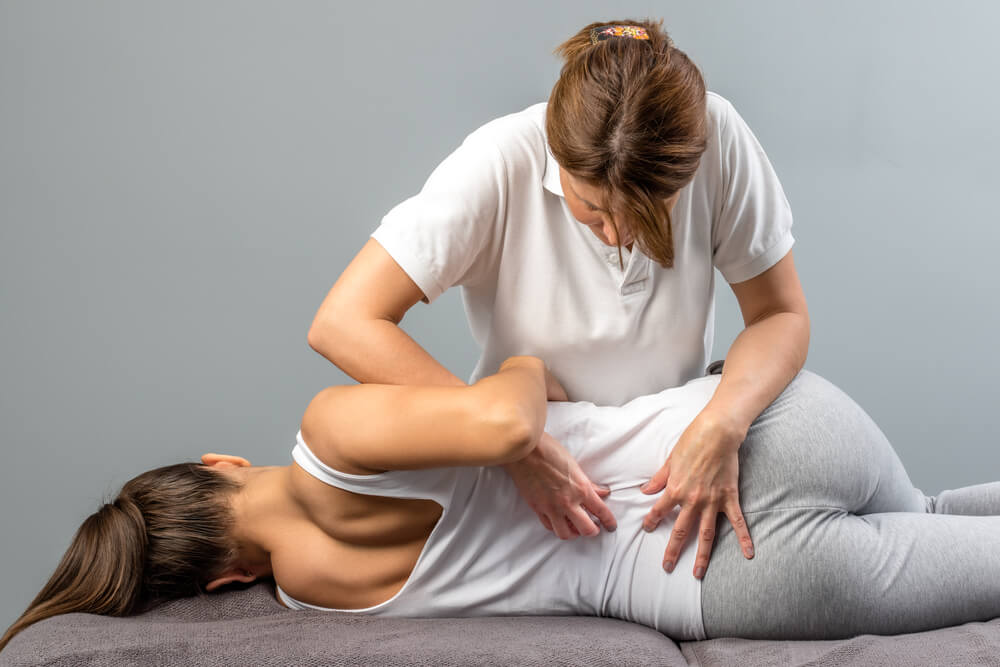Lower back pain is prevalent in people with obesity, people who live a sedentary lifestyle, or people who lift heavy things on the job. Age and posture are also risk factors for lower back pain. Unfortunately, this pain can sometimes be excruciating and even spread to other body parts, including the legs.
Fortunately, several remedies, especially physical therapy in Fort Worth, can help with lower back pain. This article explores the causes and treatments of lower back pain.
What is Lower Back Pain?
Lower back pain is pain that affects your lumbar region. The lumbar region is an area of your back that starts below your ribcage. Lower back pain is more common than you think. And in some cases, this pain goes away on its own. However, in some cases, you may need specialized treatment to relieve lower back pain.
Low back pain symptoms may range from a mild, dull ache to a stabbing sensation. The pain is acute if you feel it suddenly, especially during heavy lifting or sports. And if the pain lasts for more than three months, it is chronic. Therefore, it is best to visit your doctor whenever you feel low back pain making it hard to stand straight or move.
In addition, if your lower back pain lasts beyond 72 hours and is accompanied by fever, leg weakness, and bladder control problems, you need emergency health care.
Causes of Lower Back Pain
There are several causes of lower back pain. Understanding the cause can aid in treatment. Common causes of lower back pain include;
Strains and Sprains
Straining or spraining your back muscles can result in lower back pain. Lifting heavy objects with the wrong posture can injure your back muscles, tendons, or ligaments. You may also sprain your back when you twist or bend over.
Overuse
Overusing your back muscles can also tear the tendons and ligaments. Overextending your back muscles during a workout can result in lower back pain. You are more susceptible to lower back pain if you are mostly inactive during the week and work out for long periods during the weekend.
Fractures
Accidents like falls or crashes can fracture your back and lead to lower back pain. A risk factor for back fracture is osteoporosis. This is a medical condition where the bones are brittle and fragile.
Poor Posture
The back supports the body weight. Slouching or sitting without lumbar support adds extra weight to your back, pushing the muscles beyond their tolerable limit and causing pain.
Chronic Conditions
Some conditions also cause lower back pain. For instance, osteoarthritis develops through wear and tear, leading to inflammation and chronic back pain. Other chronic conditions that lead to lower back pain include spondylolisthesis, spine cancer, and spinal stenosis.
Lower Back Pain Treatment
Treatment for lower back pain varies from at-home remedies to surgery. The best treatment should provide relief regardless of the cause of back pain. Treatment for lower back pain includes;
At-Home Treatment
You can treat mild lower back pain at home. Some home remedies for lower back pain include using a heating pad, resting, and over-the-counter pain relievers. Returning to your normal activities after resting for a few days is essential. Otherwise, the area will have restricted blood flow, increasing your pain.
However, suppose your lower back pain persists for more than three days. In that case, visiting your doctor for diagnosis and appropriate treatment is best.
Injections
Your doctor may inject medications into the area with pain. These steroid injections reduce inflammation and reduce pain.
Hands-On Manipulation
Hands-on manipulation involves treatment techniques that relax tight muscles to relieve back pain. In addition, massage therapy and chiropractic manipulations can alleviate pain, restore function and improve your posture and alignment.
Physical Therapy
Back pain therapy in Fort Worth, TX, consists of passive and active techniques to relieve pain and prevent a recurrence. Usually, your doctor may recommend physical therapy for back pain to avoid surgery. Nevertheless, even if you undergo surgery, you will still need physical therapy to improve healing and speed up your recovery.
-
Passive physical therapy for lower back pain
You don’t have to participate in passive physical therapy. Instead, your physical therapist in Fort Worth will administer treatment to relieve pain and improve your well-being. For example, passive physical therapy for lower back pain includes acupuncture, heat and cold therapy, massages, and therapeutic ultrasound.
-
Active physical therapy for lower back pain
Active physical therapy requires your participation. However, this type of treatment helps with chronic back pain and is beneficial in the long run. Active physical therapy includes strength exercises, stretches, yoga, and pilates.
Active physical therapy exercises strengthen your core, stabilizes your lumbar, and improve your posture. Your physical therapist will work with you and recommend specific exercises for your lower back.
Surgery
Surgery is often the last resort for lower back pain treatment. However, your doctor may prescribe surgery for lower back pain if you are in excruciating pain, have a spinal injury, or are not responding to non-surgical treatments.
Physical Therapy for Lower Back Pain in Fort Worth, TX
Physical therapy can help decrease lower back pain, improve function, and increase your spine’s flexibility. In addition, your physical therapist at Barkman & Smith physical therapy will work with you to develop a maintenance program that is specific to your needs and prevents a recurrence.







